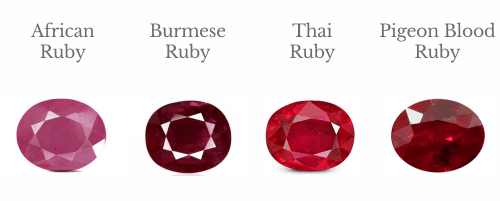
Okay, so I have to tell you. Rubies? They just pop. Right? Instantly. It’s that deep red, that glow. It doesn’t just look like a color, you know? It feels powerful. Like old-school romance, but timeless. Kings loved them. For protection, can you believe it? Lovers traded them—passion, obviously. Now? They’re right there, up high, next to diamonds and emeralds in all the fancy places. Totally luxury.
Listen, if you’re buying one—maybe a ring, maybe a July birthstone present, or maybe you’re just fascinated (like I am!)—you need to know the basics. What makes a ruby really beautiful? That knowledge? It saves you from so much confusion. And unnecessary spending. Definitely unnecessary spending.
My guide here is simple. Honest. Like a text message from a friend. No crazy words. Just the facts, okay?
Why We’re All Obsessed with the Red Ones
Fun fact! Rubies and sapphires are actually family. Same mineral. But the red? That’s what makes it a ruby. That crimson color—it screams love, guts, big emotions. It’s the birthstone for July, too. Like diamonds for April.
We love them because… ugh, they just are:
- The red grabs your attention. Zero effort.
- They’re super durable. Almost as tough as a diamond! That’s impressive.
- High-quality ones are rare. Super valuable. Hard to find.
- They look unreal in any kind of jewelry. Doesn’t matter what.
- They have an attitude. They stand out. Confident, but still elegant.
The Color Rule: Forget Labels, Trust Your Brain
This is the big one. If you’re looking at a ruby, the color is the whole point. It’s the first thing you see. It is the gem’s personality.
So, what’s a “perfect” ruby, really?
- Rich, deep red. Not weak. Not pink. Must be deep.
- A little bit of light inside. A glow. Like it’s lit up.
- No weird dull spots or watery-looking patches. Nope.
- Should look happy in sunlight. And indoors. Everywhere!
People always bring up “pigeon blood red.” Honestly, just ignore it. Everyone says that now. Don’t chase a fancy name—what does your eye tell you? If it looks vibrant, warm, and lively to you, that’s the one.
Clarity: They’re Supposed to Have Flaws!
If you know diamonds, they freak out about clarity. Totally flawless, perfect, blah blah. Not here. Forget that standard. Natural rubies always have tiny flaws and specks inside. Always. That’s how you know they’re real! It’s a character.
A good ruby just has to:
- Look clear to your eye. When you just look at it normally.
- Not have giant cracks or big, cloudy chunks.
- Let the light pass through without getting totally stuck.
- Zero flaws? That’s weird. It’s either synthetic or super rare. Seriously, don’t stress the tiny stuff. Flaws are normal here.
The Cut: It’s All About the Show
Diamonds are cut to sparkle. Rubies? Different goals. They are cut to make the color look amazing. That’s it.
A decent cut means:
- Light reflects everywhere evenly.
- The red color is consistent. All over.
- The shape is nice. Pleasing to look at.
- No dark, dead spots. The color should feel awake.
- Ovals and cushions are favourites, yeah. But whatever shape you like? Get it. Rubies are fun. No strict rules!
Carat Weight: Don’t Buy Big and Ugly
Rubies don’t grow super-sized naturally. So, a huge natural one? Insane price. But listen to me: Bigger is NOT better. Stop focusing on size!
A small ruby with incredible color will beat a big, pale, dull one every single time. Every. Time.
Most people like 0.5 to 2 carats because:
- The color is still strong and noticeable.
- It’s comfy to wear. Everyday wear.
- The price doesn’t totally ruin your budget. Yet.
- Focus on how good it looks. Not the weight.
Real, Treated, or Fake? Here’s the Scoop.
Untreated Natural Rubies:
These are the mega-rare ones. They came out of the ground perfect. Zero changes. If the color is great, they are crazy valuable. Like, more than a diamond, maybe. Collector territory.
Heat-Treated Rubies:
This is what you see most often. They are real rubies, but they were gently heated up. Why? To make the color look better! It’s super common. Totally accepted. A great buy.
Synthetic Rubies (Lab-Grown)
Okay, these are cool. They are chemically the same thing as natural rubies. But they grew in a lab. They look flawless! Way cheaper. If you want the look and the hardness without the crazy price? This is your pick.
Glass-Filled Rubies:
Seriously, never buy these! They look shiny at first, but they are junk. They are fragile. They will break. They are not fine jewelry. Total waste of money. Just avoid it.
Where Does It Come From ?
People get all snobby about the origin. It matters a little, sure, but don’t let it stress you.
- Burmese rubies are famous. They have that perfect, insane color.
- Mozambique stones are more popular now. They’re bright and usually easier on the wallet.
- Other places like Vietnam and Thailand have nice ones, too. Different shades.
The origin can make the price go up, yeah. But look at the stone! Buy what you love.

Picking Your Ruby: The Easy Way
Here’s the simple checklist that works. Every time.
- Look at the color first. Pick the one that looks richest. The one that feels alive.
- Does it look clean to your eye? No big cloudy spots or massive cracks. Good.
- Is the cut balanced? Does it look bright? Good.
- Know your budget. Decide: Rare/Natural? Or Perfect/Lab-Grown?
- Don’t buy: Anything dull, super dark, or too pinkish. Just don’t.
- Always ask for a paper certificate. Get it checked by a good lab.
Bottom line: If you look at it and you think, “Wow, that’s beautiful,” then it is the right ruby for you. Simple. Done.
